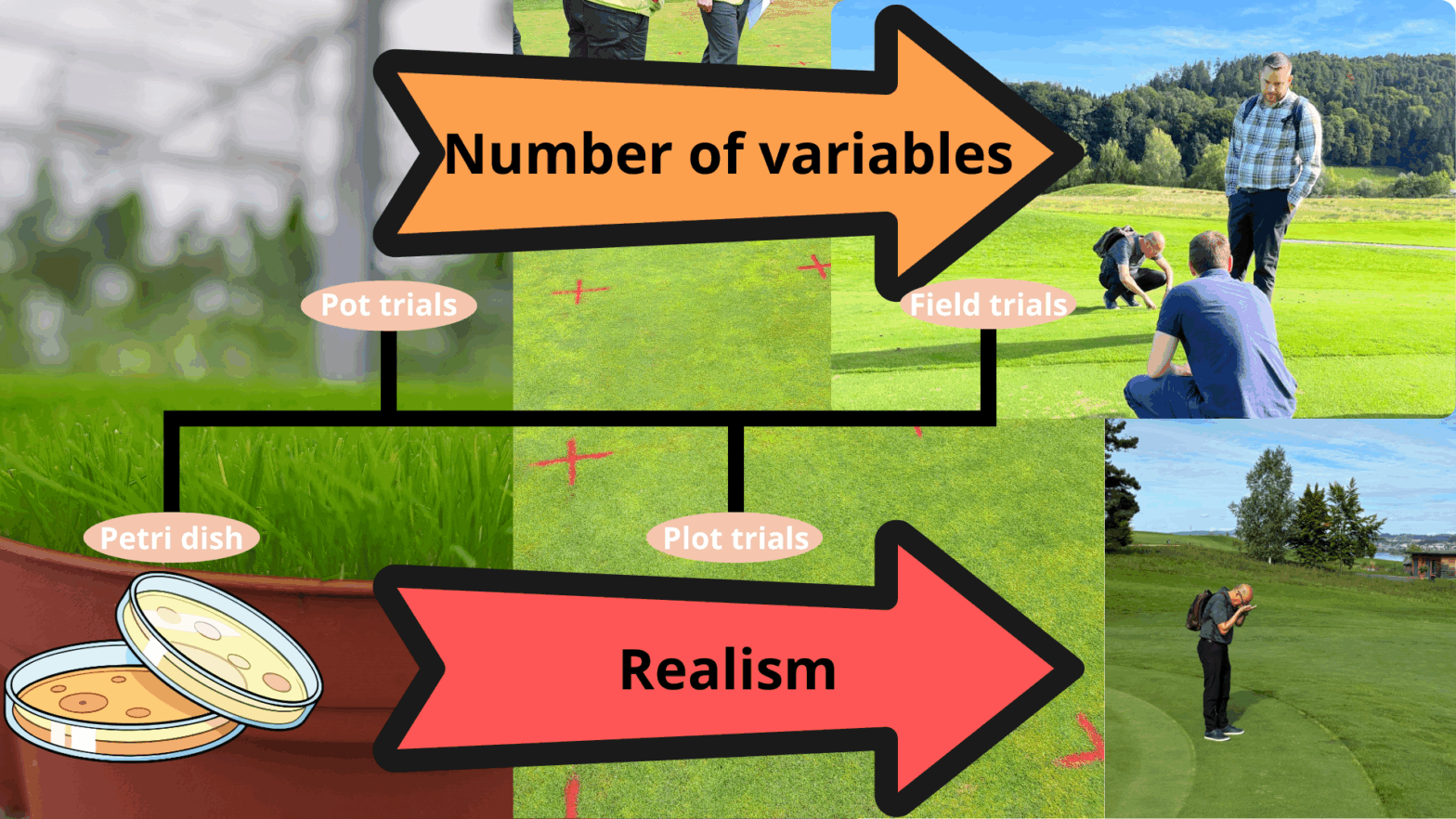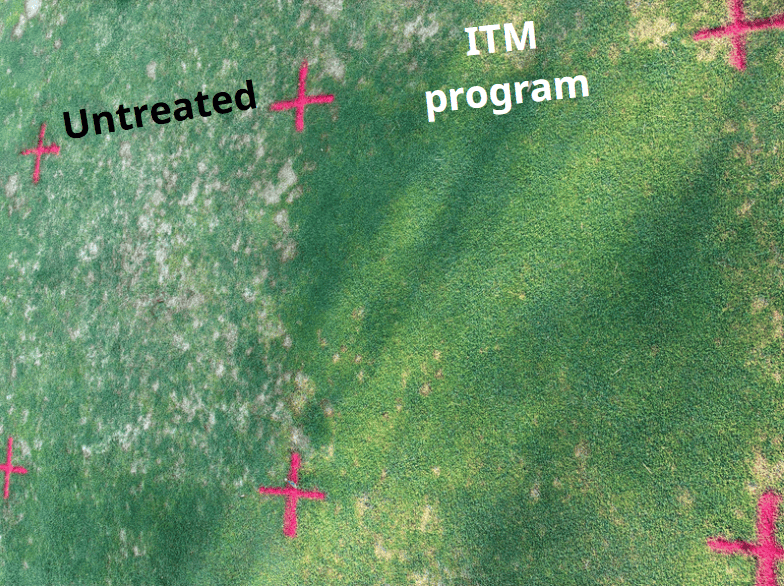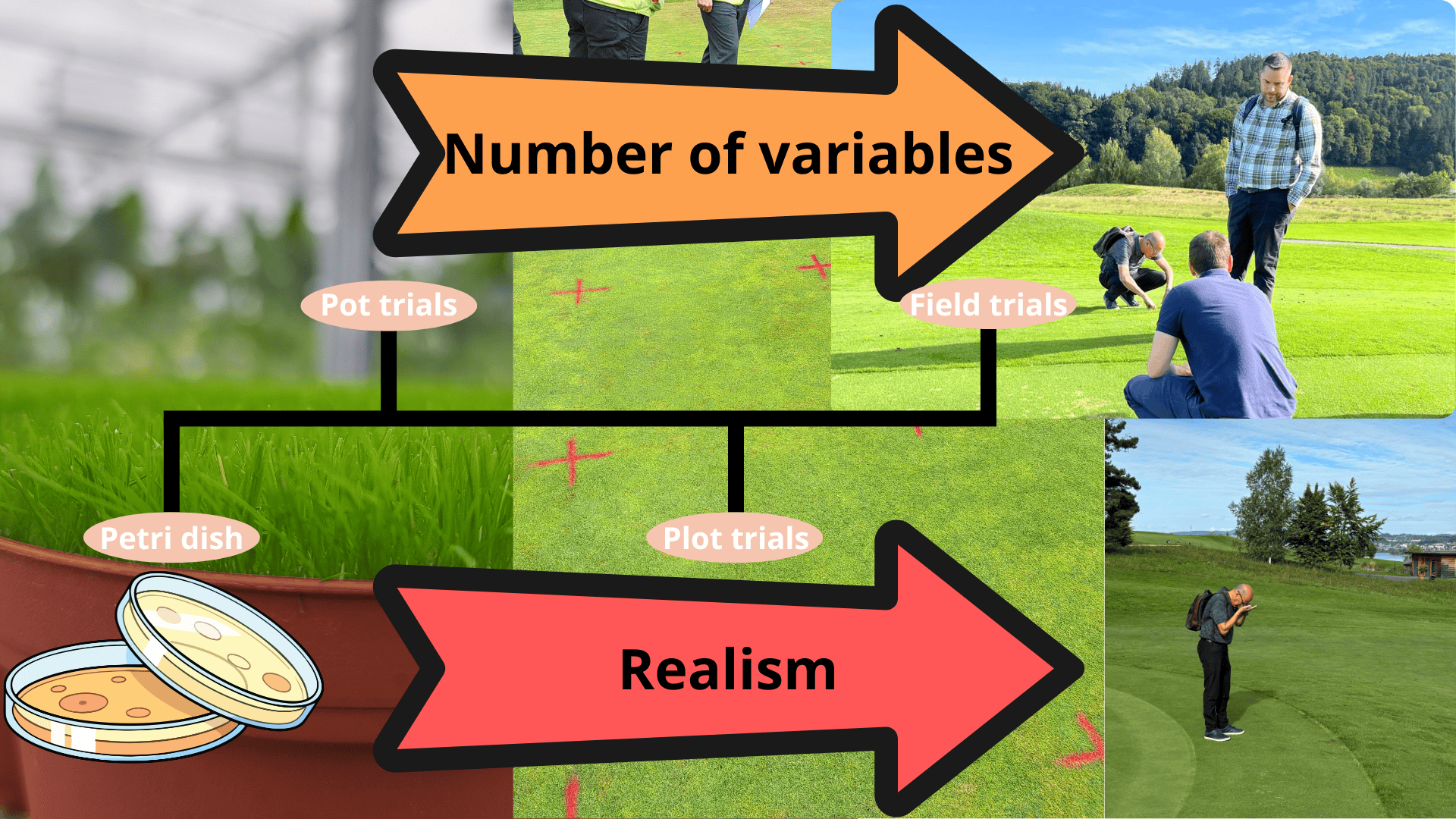With R&D (research and development) at it’s core, at any time Syngenta is working at several stages of the study ladder.
Some products are first look – early concept – screening.
Some we know work in principle, but we need to do work in the lab to understand how they work, or for how long.
If it’s still looking great in the lab small plot trials are next. Any product which is to make it to be sold needs to pass this phase and prove it’s worth.
Field or user trials are the last step, seeing how the treatment gets used in real world conditions in a turf situation.
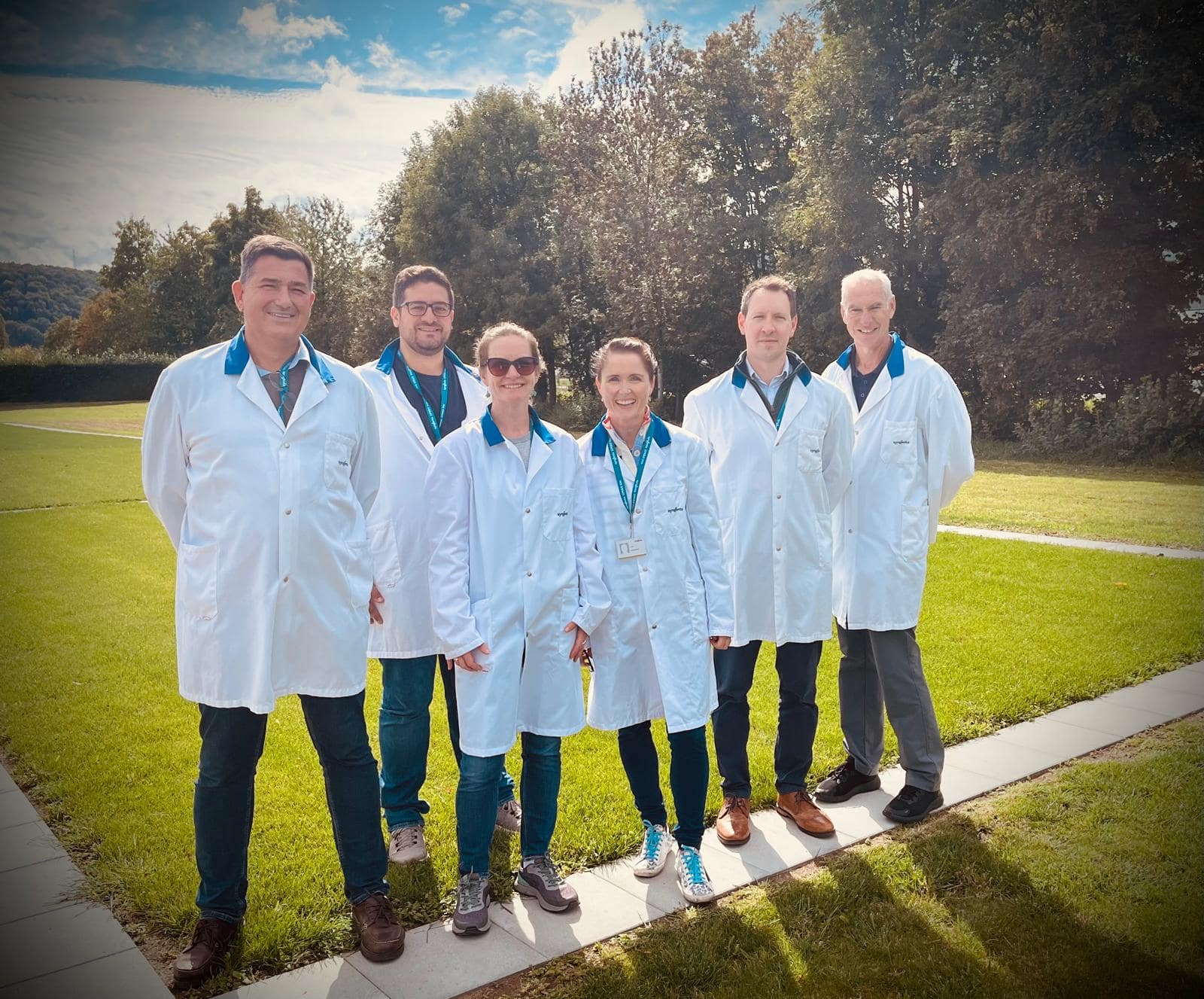
The Turf & Landscape team in Stein.
I recently got to visit our Stein research facility, it’s at the forefront of fungicide and insecticide development so it was fascinating to see around and talk to some of the teams about the turf work they are doing currently.
The visit got me thinking about trials in a broader sense.
Understanding why we do different studies on different scales?
We want the studies we do to give us insights for real life turf situations, so why not do them all at full user trial scale and be done with it?
The simple truth is it’s a sliding scale, the more variables we bring in the more real the study.
But also the less understanding we have over exactly what is happening and why.
The very first step on the journey for a Syngenta product discovery is at Jeolott’s Hill in the UK.
It all starts with a single drop of the substance into a tiny well plate, all future decisions depend on the outcome of that…
Petri dish
Each year we screen a vast array of concepts, Dr Eric Chen is based in the UK and his role is to bring new and exciting biologicals from concept to you.
He commissions many tiny studies to compare the performance of these prospects, and make sure we advance those with the best outlook.
At the petri dish stage we could be looking at seeding agar jelly with a fungicide or putting a stripe of it across the top of the agar for a biocontrol.
Known diseases can then be introduced to see how they progress.
Rapid unchecked growth of a fungi would suggest the product is not working, or the dose needs to be higher.
We like these tests as they can be done fast, screening lots of options or rates.
Almost all of the variables can be tightly controlled which makes for an ace experiment!
Think temperature for example, Stein could hold a tray of dishes at dead on 15.5°C for the whole 2 day trial.
That can yield some really interesting insights, but we need to remember that there are no turf plants in that jelly, and real life never gives you an exact temperature on a golf course for more than a few hours.
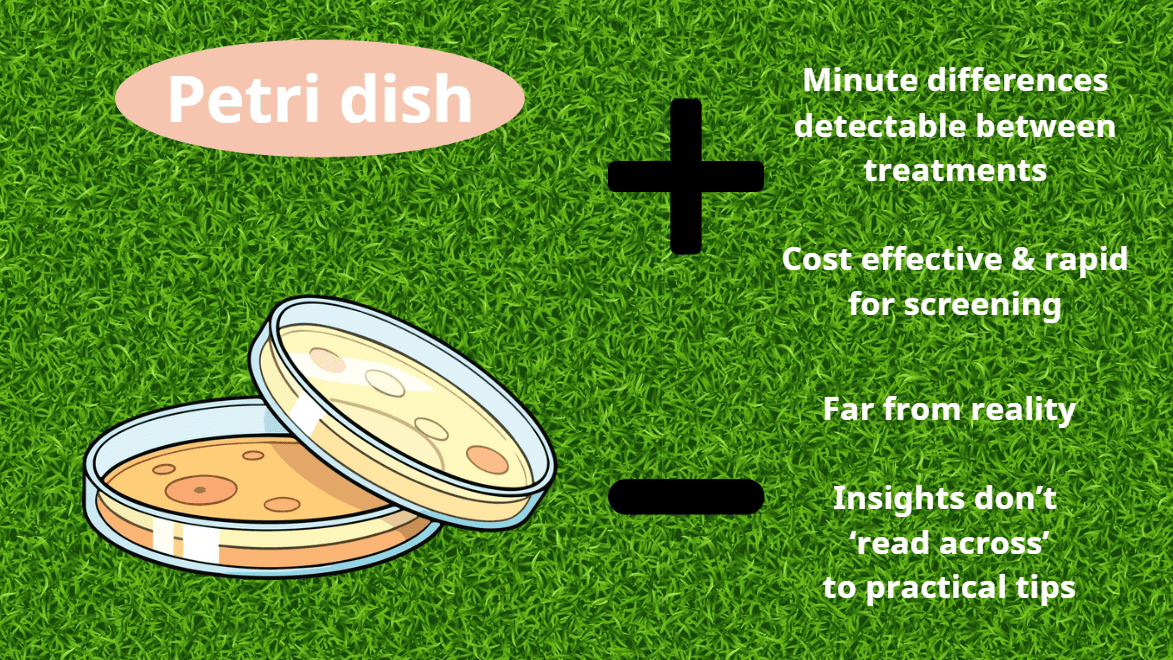
So we screen out the weak and take the best onto the next phase…
Pot trials
A step change from a petri dish, we have real live cool season turf grass!
We keep the high level of control – temperature, humidity, air movement.
In exchange for adding a live plants we lose some control, we can’t run the studies as fast, the seeds need to be grown to a pre defined maturity before starting.
Careful maintenance is required to clip the grass and evenly irrigate the pots.
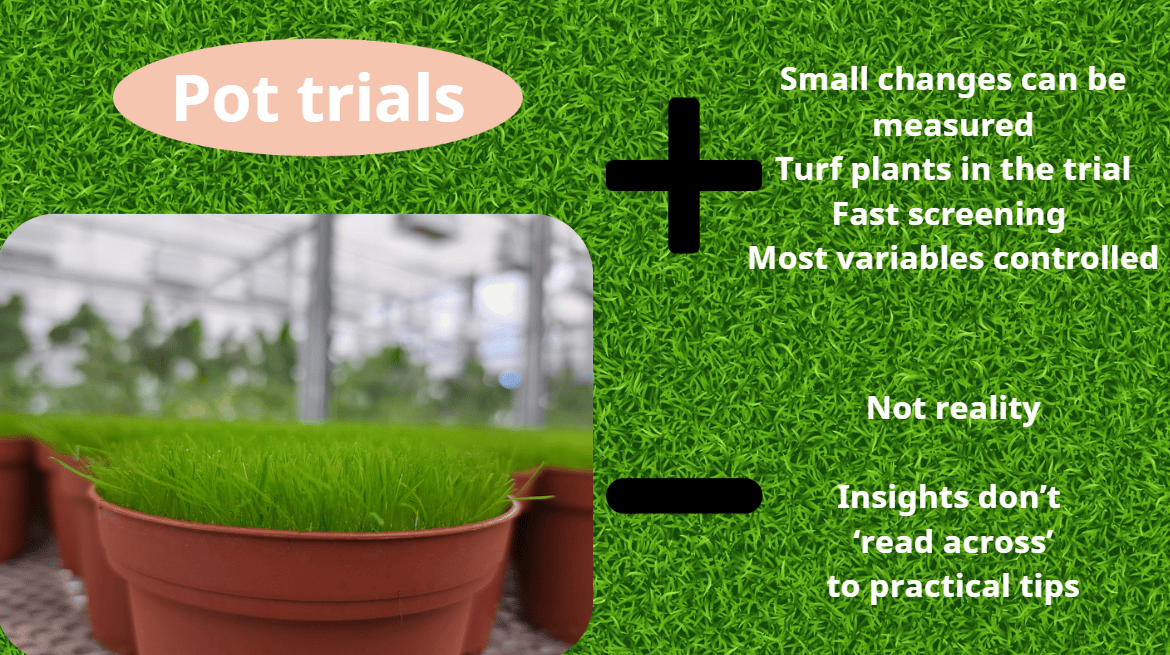
I went to visit Chris recently who is doing a dissertation project on germination levels with and without wetting agent, measuring if the addition can allow reduced irrigation to achieve the same (or better) density and help save water.
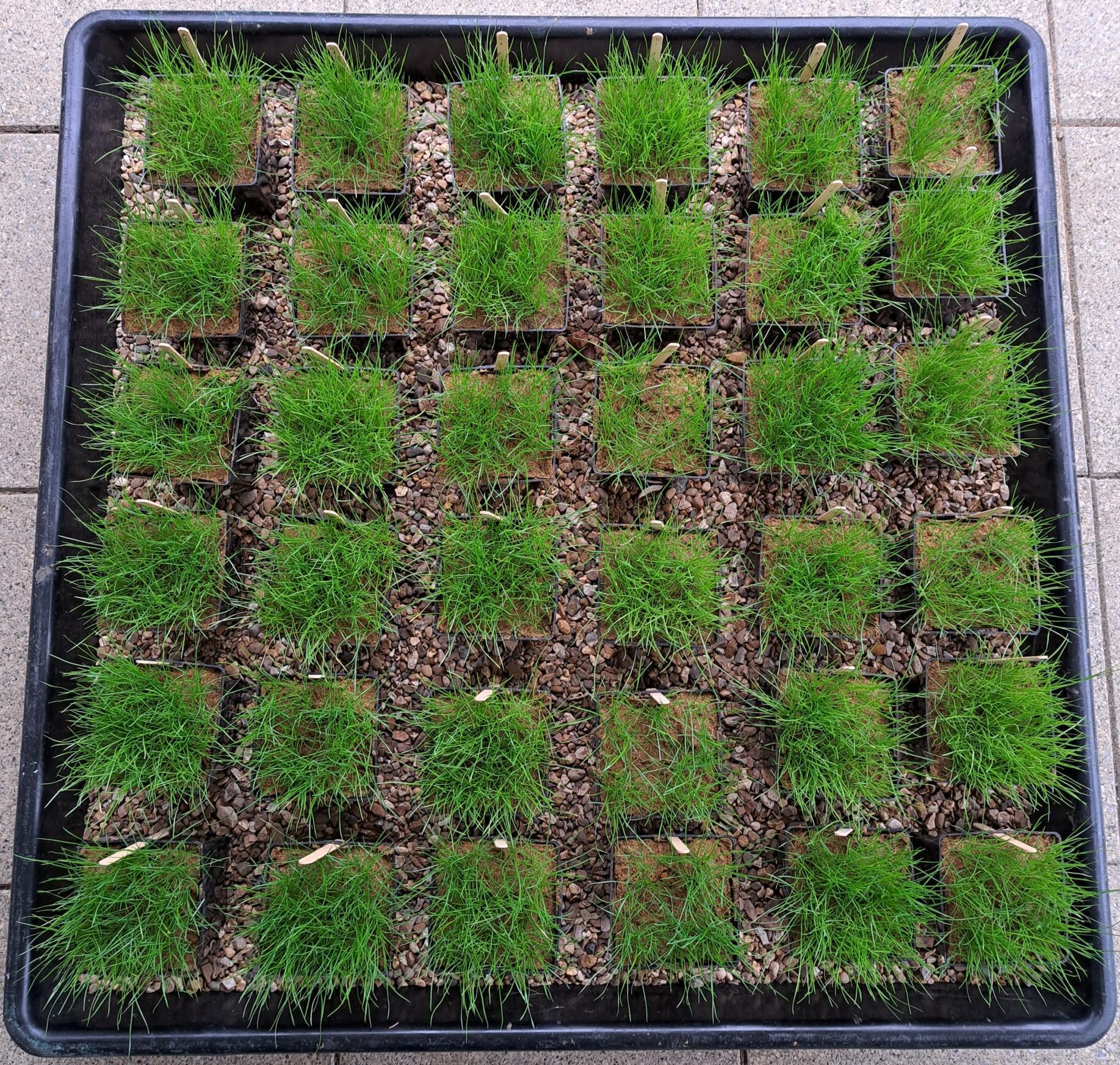
A project like that would be impossible to do in the field as you need that control over the water inputs and no water movement from surrounding plots like you would get in a small plot trial.
It’s the end of the trial when I took the picture so not showing the differences, but the pot trial allowed Chris to painstakingly count every plant that grew in the sterile media to assess strike rate.
A labour of love I’d say.
Pot trials can also be important for seeing early signs of phyto damage – and allow us to steer clear of products or rates which could lead to issues.
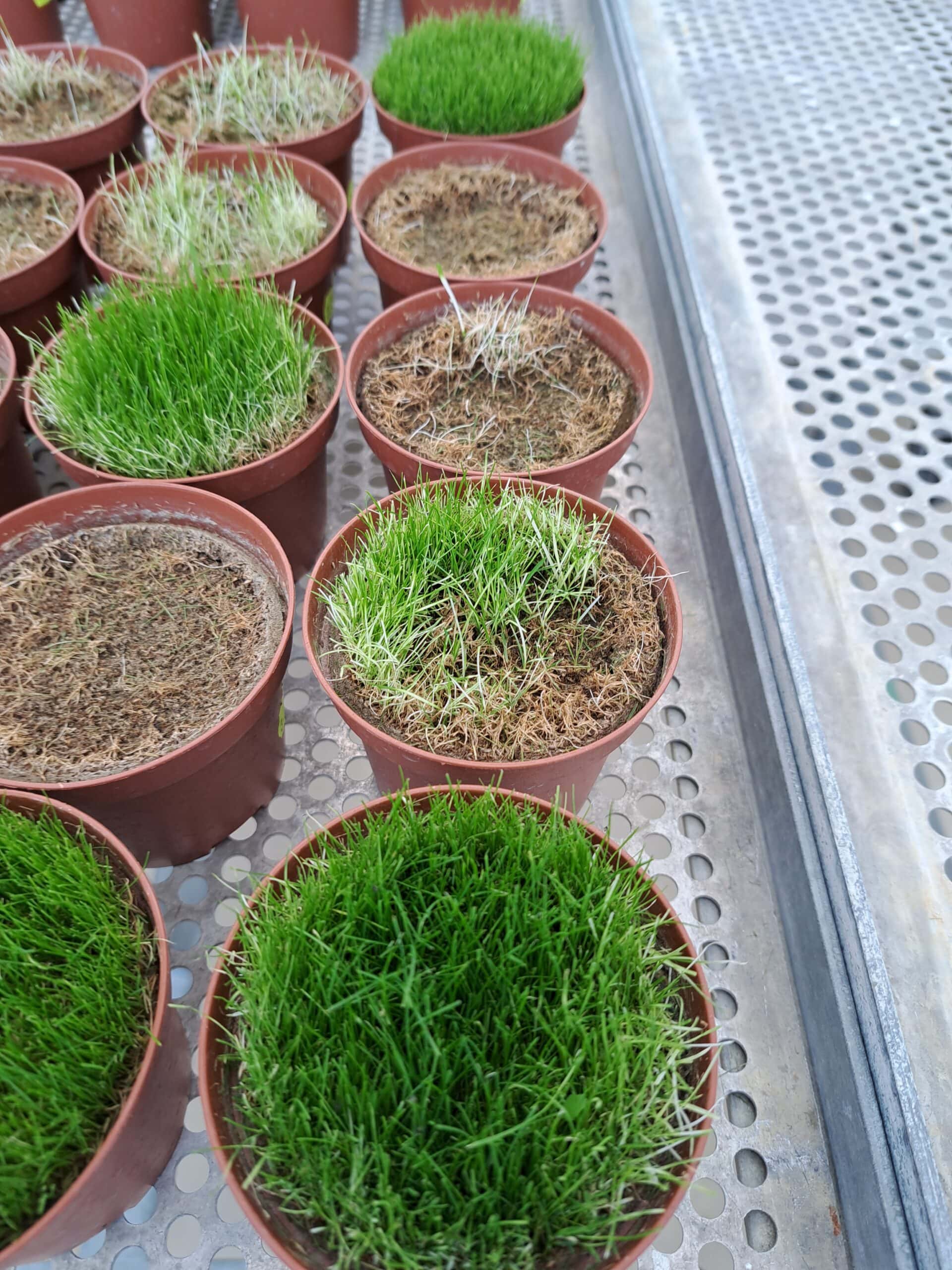
Plot trials & Field trials
We move up another gear, harder and harder to get control of variables here.
Did the new product fail because it got too cold or because we had a freak downpour of rain?!
If we need to repeat the trial we’ll need to wait until next autumn to get the disease pressure – this can push the time lines back a way.
But for all the countless negatives it’s an essential step, and nothing like seeing success in these projects where the weather has thrown the worst at the turf and we are still measuring big differences compared to the untreated areas.
To summaries there are a whole range of trials which go in to finding the best turf products, through the early stages and screening before the grass gets involved – all the way up to full multi year user trials to test the robustness under normal turf management conditions.

